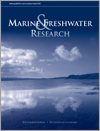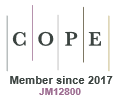Marine and Freshwater Research
Volume 76
Number 11 2025
This study investigated the optical and isotopic properties of organic matter along a salinity gradient from the Glomma River to the outer Oslofjord. The results indicated that the light absorbance by terrestrial organic carbon and its fraction to marine-derived carbon diminish the further we go from the shore. It illustrates how coastal darkening is a relevant ecological issue affecting mainly near-coastal areas.
The allelopathic effects of a differing diversity of aquatic plants on phytoplankton are not well known, although it is well known that aquatic plants have allelopathic effects on phytoplankton. We determined the allelopathic effects of four submerged macrophytes along a diversity gradient on the growth of a bloom-forming alga, Microcystis aeruginosa. The results showed that the alga were negatively affected by plant extracts and the algal growth inhibition increased with submerged plant diversity. Diverse mixed submerged plant allelopathy to control cyanobacteria is a potential strategy in eutrophic aquatic ecosystems.
Freshwater ecosystems are indispensable for earth stability and human survival, yet increasingly threatened by anthropogenic pressures and climate change. This paper synthesises key findings from all contributions in this collection and highlights cutting-edge advances in freshwater ecosystem research and practice. This compilation deepens our understanding of freshwater ecosystems and their challenges, advancing hydrosphere sustainable development.
This article belongs to the collection: Ecological monitoring and assessment of freshwater ecosystems: new trends and future challenges.
This study has provided a novel assessment and confirmation of multiple paternity as a mating strategy for the commercially important spinner shark (Carcharhinus brevipinna). We achieved this with the application of genetic techniques to infer sibships and identify paternities. We make considerations for these findings in the context of existing hypotheses and highlight areas for future research to take place.





